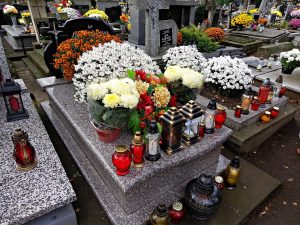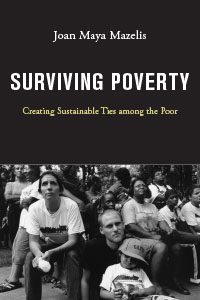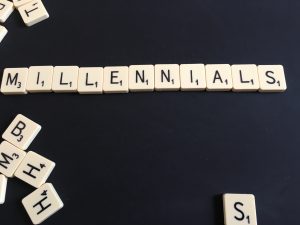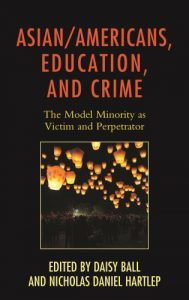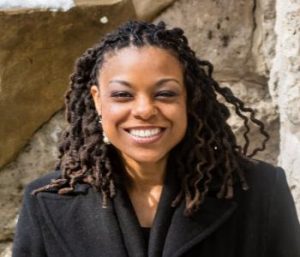
To improve the well-being of families in urban communities, it is important to understand how violence exposure can have an effect on the development of youth. Dr. Noni Gaylord-Harden is valuable for understanding community violence as a health issue rather than a criminal justice issue. Dr. Noni Gaylord-Harden is clinical psychologist and an associate professor of Psychology at the Loyola University of Chicago. She is also a Council on Contemporary Families expert—and board member. Her current research focuses on community violence exposure in African American youth. I recently asked her several questions about her research and perspective on it.
EO: How did you become interested in the mental health of African American youth and families?
NGH: There were a number of seemingly unrelated factors that occurred around the same time to generate my interest in the mental health of African American youth and families. In one of my courses in graduate school, we discussed the impact of stressful life events on psychosocial development in children, and one study that we discussed found that, for each additional stressor experienced by a child, the likelihood of negative psychosocial outcomes increased exponentially. At the same time, I was working as a graduate research assistant on an intervention to reduce aggressive behaviors and increase prosocial behaviors in children, and the project was being implemented in one of the most impoverished school districts in the area. Through this experience, I witnessed how societal inequalities resulted in limited resources and opportunities for success for African American children and families, and I was struck by the number of stressors experienced by the children in the intervention.
Each day, I left the intervention sites thinking about the research study we discussed in class, and wondering how to enhance the well-being of African American youth exposed to disproportionate levels of stressors. Around this time, child coping was emerging as a research area and gaining a great deal of momentum in clinical and developmental psychology. Starting with my dissertation, I began to pursue a program of research on stress and coping in African American youth. I began to conduct research to better understand the impact of stressful life events on psychological functioning in African American youth, how adaptive coping behaviors may buffer the negative impact of stressors, and how African American parents support or enhance adaptive coping in their children.
EO: Your research focuses on community violence exposure as a stressor for African American youth and families in urban communities. What is the impact of community violence exposure on the well-being of African American youth and families? What helps to minimize the negative impact of violence exposure?
NGH: My early work on stress and coping focused on African American youth’s experience of stressors in multiple domains, including peer stressors, family stressors, school stressors, community stressors, etc. Due to attention on violent crime in Chicago, our more recent work hones in on community violence exposure as a stressor. We are learning that, in comparison to other stressors, community violence is unique in regard to both its impact on well-being and the factors that buffer its impact. Our work demonstrates that higher levels of community violence exposure predict higher levels of aggression, delinquency, and post-traumatic stress symptoms, in African American male adolescents, similar to other stressors.
However, we were surprised to find that the association between violence exposure and depression is curvilinear in a number of our studies. This finding means that as the level of community violence exposure increases, levels of depression increase to a point, and then depression begins to decrease as even as community violence continues to increase. This pattern suggests that youth may become emotionally desensitized or emotionally numb to community violence exposure as levels increase. At the same time, these youth are experiencing more trauma symptoms, such as hyperarousal, as violence levels increase. Further, we found that both emotional numbing and hyperarousal mediate the association between violence exposure in early adolescence and aggressive and delinquent behavior in late adolescence in African American males.
We were also surprised to find that coping strategies that were helpful for others forms of stress were not helpful for community violence exposure. Instead, our work has shown that the one coping strategy typically regarded as maladaptive, avoidant coping, is helpful in reducing negative outcomes for African American youth exposed to violence. Finally, we found that parental support does not impact on how youth cope with violence, which is inconsistent with our findings for other stressors. Interestingly, another factor—positive future orientation—has emerged as a stronger and more consistent protective factor that coping. Positive future orientation means that youth are optimistic about their future and expect to achieve their goals. Our findings with African American high school students suggest that positive future orientation buffers the impact of violence exposure on delinquent behavior. We believe that future orientation holds promise as a malleable target for intervention efforts with youth exposed to community violence. We are now interested in exploring how parental behavior may influence youth’s future orientation. We believe that future orientation may be more easily influenced by parents than youth’s coping behaviors, and if we can demonstrate this, we can endorse future orientation as a target in family-based interventions for youth exposed to violence.
EO: In order to better the well-being of African American youth and families exposed to community violence, what are some policies or conditions that contribute to making matters worse for them? In other words, what just isn’t working? What are policies or conditions that are needed to make things better?
NGH: Of course, the most effective policies would be those designed to reduce violent crime, thereby minimizing opportunities for youth to be exposed to violence in the first place. Policies that focus on economic investment in under-resourced communities to improve school conditions, create high quality mixed income housing, and provide job opportunities and workforce development will likely help to reduce violence.
In the meantime, we believe that treating community violence as a criminal justice issue is ineffective. Due to the traumatic nature of violence, community violence exposure is a health issue and should be treated as such. Our work shows that youth who have been exposed to community violence are at higher risk for additional exposure, as well as perpetration of violence. We have also demonstrated that symptoms of PTSD and emotional numbing help to explain this risk. Thus, rather that responding to youth’s behavior in punitive ways, which may further traumatize them, policies should work to ensure that systems and programs in the lives of young people are trauma-informed and trauma-responsive. We believe that reducing symptoms of hyperarousal, hypervigilance, and emotional numbing in youth exposed to violence can help to reduce the risk of subsequent exposure and perpetration and enhance well-being.
Eunice Owusu is a Council on Contemporary Families Public Affairs Intern and a senior sociology major at Framingham State University.


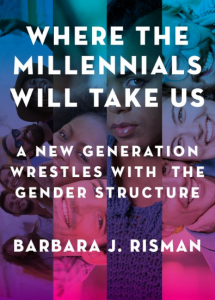 The term “millennial,” according to Frank Furstenberg, is an
The term “millennial,” according to Frank Furstenberg, is an 